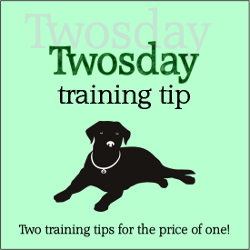 TIP #1: WORKOUTS FOR THE BRAIN Work to eat. Biologically speaking, your dog is not supposed to have a bowl of kibble plunked down in front of him. He is a hunter by nature, meant to work for his keep. Mimic this by serving your dog’s food in a Kong or treat ball. Your dog will spend the first part of the day figuring out how to get at his food and the rest of it recovering from the mental effort. Perfect! Toys galore. Toys are a great way to engage your dog’s brain. Dogs have distinctly individual toy preferences, depending on the day, time, and situation. Do some detective work and find out what truly tickles your dog. The best toys have a purpose. They deliver food, present a challenge, squeak, or make themselves interesting in some other way. Some classics to consider: Rope toys, plush toys (with or without squeakers), Hide-A-Bee (Squirrel, Bird), tricky treat balls, soft rubber toys (vinyl), and hard rubber toys like Kongs and nyla bones. Once you have a good selection, develop a toy strategy. Designate a popular toy for use only during alone time, like when you need to leave your dog in his crate, confinement area, or a spare room. Then, rotate the other toys daily to keep the novelty factor high. TIP #2: PROPER WALKING ETIQUETTE Have you ever felt dismayed over the shrinking access for our canine companions? I know that to a large degree we've brought it on ourselves by our collective carelessness about proper public and leash-walking etiquette. Teaching your dog how to walk politely on a leash is more than just a convenience. When you can walk in public with your dog following your moves, he's more likely to stay out of trouble. Teach your dog the difference between walking and heeling. Whether you're teaching "Heel," or the less formal "Let's walk," the correct position for the part of the leash that stretches from you to the dog is slack, hanging down in a valley. Be sure when your dog is with you that you keep the leash slack. If you keep it tight, he'll think tension in the leash is normal and correct. Remember that your dog's leash is not a steering wheel or handle. It's a safety belt, intended to prevent your dog from leaving. It's not to be used to pull him around, nor should he drag you along behind him. - Whole Dog Journal  We taught Murphy how to Stay, as well as Leave It today. He did exceptionally well for such a young pup. He's just one laid back, and cute, dog. 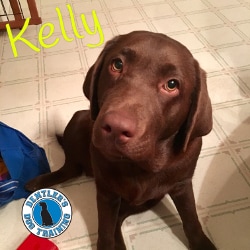 Kelly was taught how to Down on cue, as well as Leave It. The leave it will be especially useful because she likes to dig in the yard, plus she lives in a household with small children. 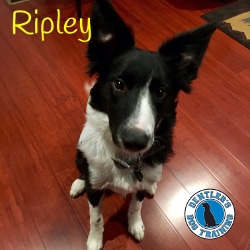 Today we taught Ripley how to Come When Called. We used a long line and recall games and in just a short time he was sprinting back and forth between us as we called him. He loved it! 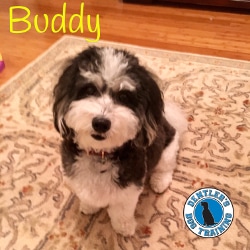 We intended to teach Buddy how to Stay, but soon realized the need to stop his demand barking. By taking our attention away when he barked worked after just a few tries. But he still needs to learn to sit still for a period of time before we can teach him to stay. 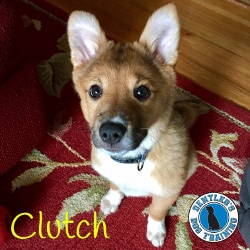 Say hi to Clutch, a 3-month old Pomeranian/Shetland Sheepdog mix. He bites a lot and pees in the house, basically what 3-month old puppies do! We will be fixing those issues as well as teaching him his basic manners. 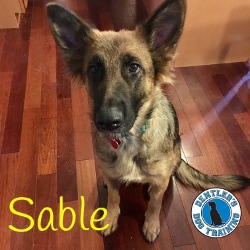 Tonight we taught Sable how to Leave It. She learned it so quickly that we also had time to work on her door greetings. After just a couple of trials she was able to sit/stay and wait for the person to enter.  Sherman is a bit of a resource guarder and doesn't like to give up items he has, so tonight we taught him how to Give It on cue. We started with very low value items and worked our way up to things he really loves and we were able to safely trade for it every time. And, he loves his new daycare! 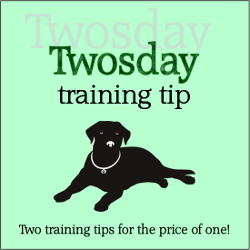 TIP #1: HOUSE TRAINING AN ADULT DOG Shouldn’t an adult dog know where to go? Ideally, yes. And dogs are naturally clean animals. Given a choice, they will go to the bathroom well away from where they sleep and eat. But it is not at all obvious to dogs that carpets and floors are inappropriate toilets - or that the bathroom rules in one place apply everywhere else. Teach your new family member to distinguish between indoors and outdoors by getting her to go in a designated area and then rewarding her with treats and praise. With a little patience and supervision, your dog will soon be fully versed in toilet etiquette. Remember and adhere to the 2 rules for house training success: Prevent Accidents. Supervise your dog in the house. Use a crate when you are not sure if your dog is empty. Reward your dog for going outside. Praise at the right moment, i.e. the second she starts ‘going.’ Reward with a treat after she is finished. TIP #2: BREAKING UP DOG FIGHTS There is no golden standard for breaking up a dogfight, but there are as many opinions as there are dog owners. My recommendation is to try a sudden aversive, such as a loud noise near the combatants as a first line of defense. Bang pots and pans or steel water dishes together while yelling. Cease the instant the dogs disengage. If this doesn't work (try for two or three seconds, then move on), the two most experienced people, wearing the animal control gloves, will each pull one dog off as follows:
If this doesn't work, use citronella and, if that doesn't work, pepper spray. Other people present should be securing all dogs not involved in the fight. The very last resort to consider is pulling dogs out by their collars or necks. This is because of the significant risk of an accidental or re-directed bite. This risk is even greater if you are without gloves, which offer some protection. Many of the worst bites are sustained putting hands into fights. - excerpted from Fight! |
AuthorJeff Dentler, CPDT-KA, IAABC-ADT, FFCP, CTDI Archives
July 2024
Categories |


 RSS Feed
RSS Feed